Seasonic M12II Bronze Evo Edition 850W Power Supply Review
Peter Donnell / 8 years ago
Introduction & Packaging
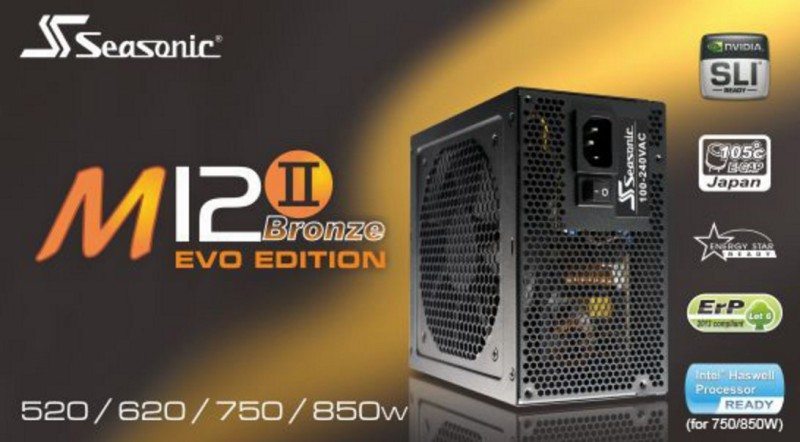
Seasonic is one of the biggest power supply manufacturers in the world, creating many of the best performing units available on the market today, so we’re very happy to see their new M12II Bronze Evo Edition 850W unit on our test bench today. We’ve seen a lot of Seasonic power supplies over the year and featured many of them in our own personal builds too, as time and time again they’ve proven they can deliver great looking units, with solid performance and features every single time, so we have high expectations of this unit we’re testing today.
Equipped with all the latest safety features that we’ve come to expect, as well as a wide range of connectors to suit virtually any system build, fully modular flat cables, and Bronze level efficiency, we’re ticking all the right boxes for a mid-budget, high-wattage PSU. So let’s get right to it and take a closer look at what it has to offer.
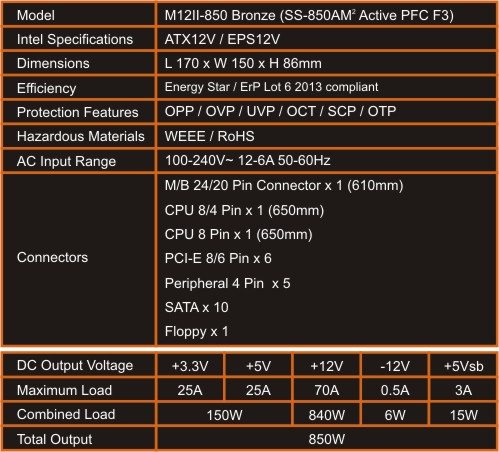
The packaging is nicely designed, with a clear image of the PSU as well as details of all the major specifications; 850W, ATX12V, 80 Plus Bronze, SLI support.
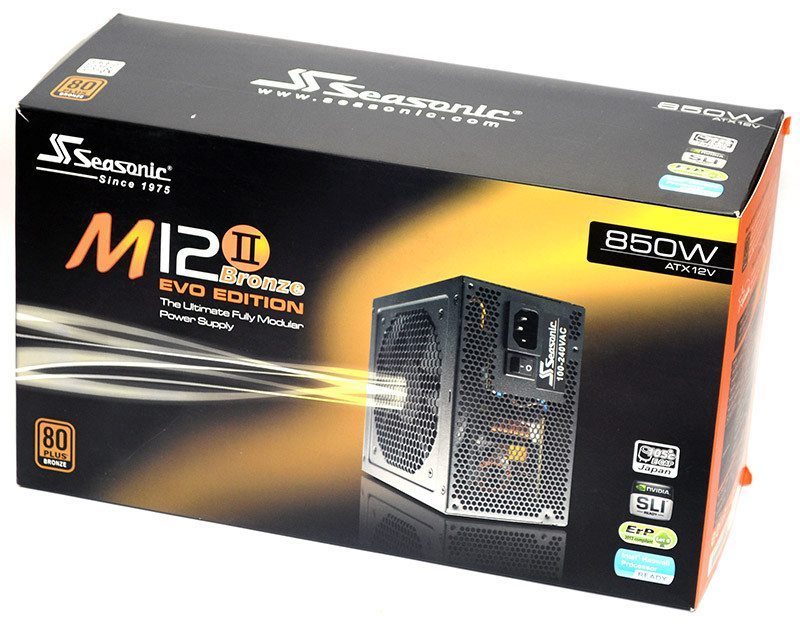
Around the back, a more detailed run down of the specifications and features, but let’s open the box and see for ourselves.
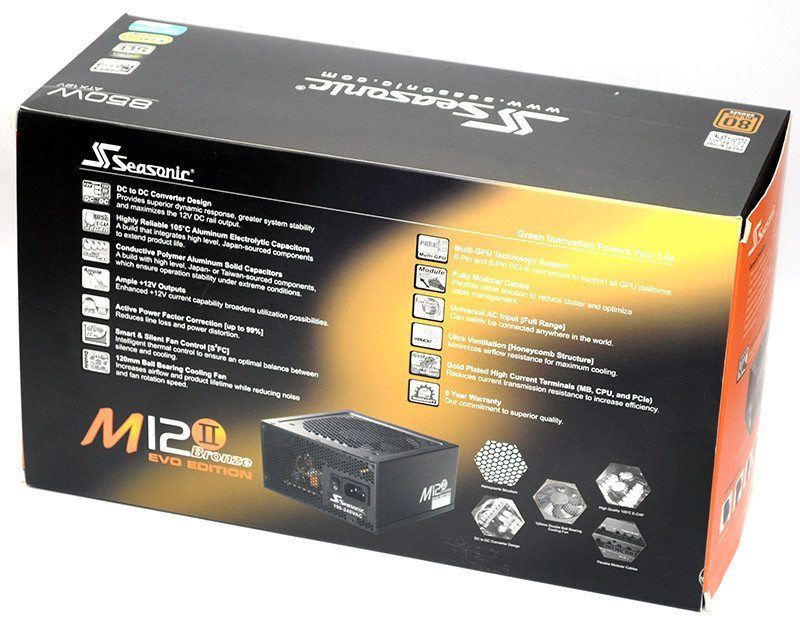
In the box, you’ll find the usual user’s manual, fitting screws and a protective bag with all the required cables.
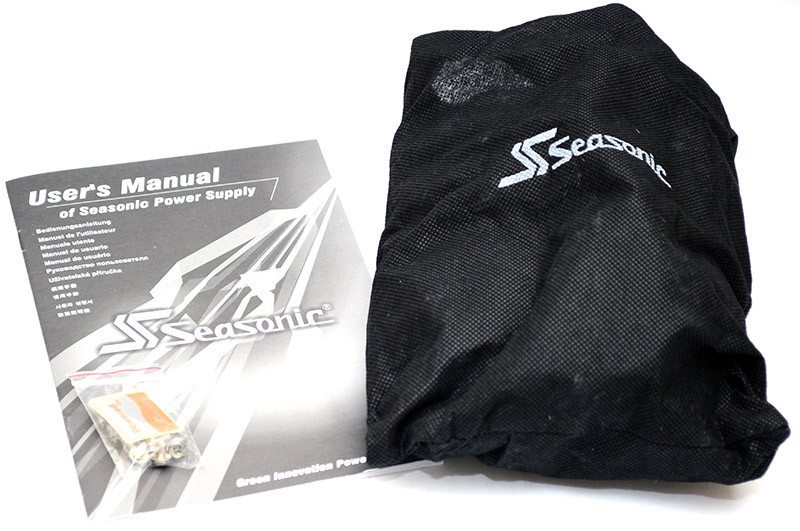
A Closer Look – Exterior
The PSU comes fitted with a good quality 120mm fan and plenty of ventilation to allow for cooling.
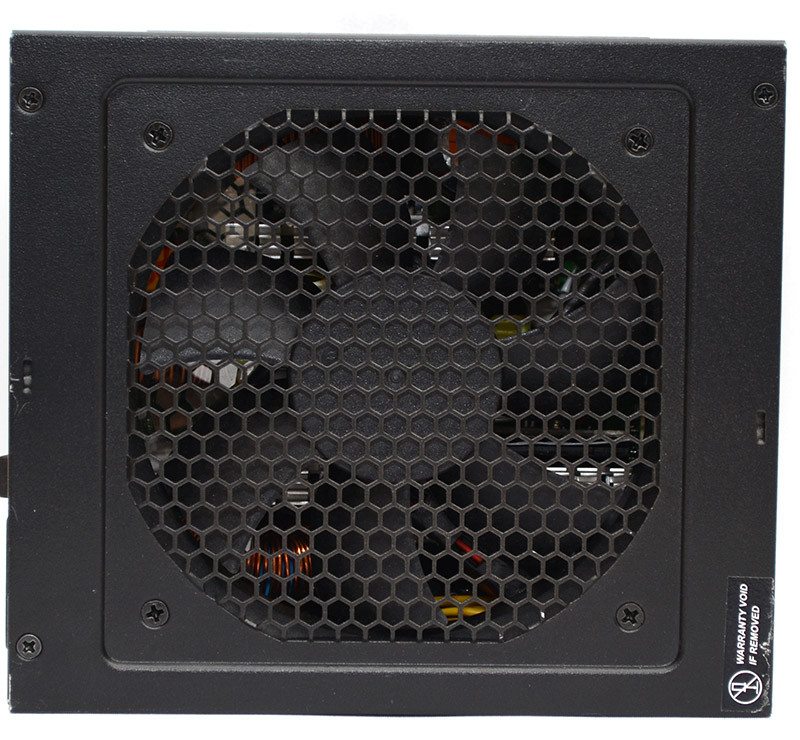
The aesthetics are fairly standard, nothing too fancy, but not unattractive either.
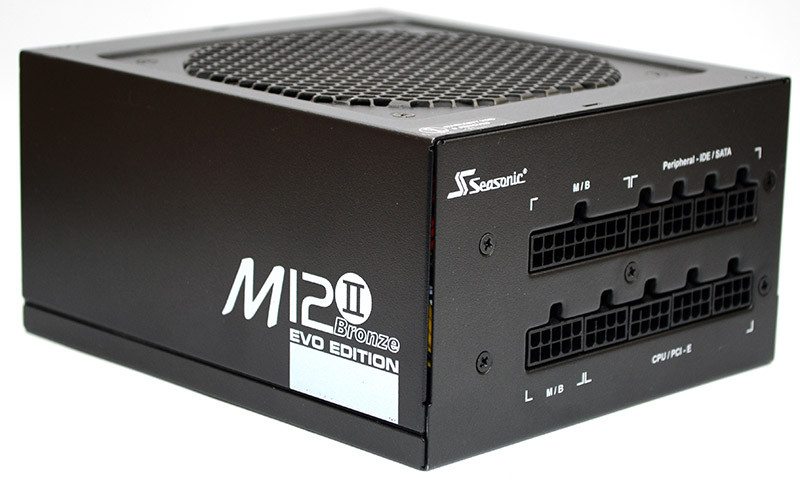
A blank panel on the base of the unit, which should blend into your build easily enough as its not visually distracting.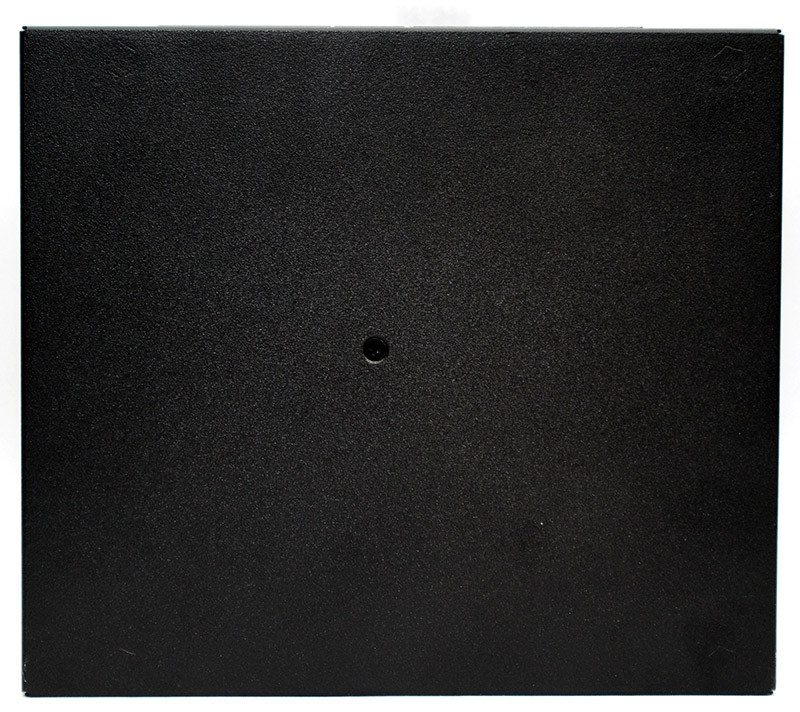
There’s the M12II Bronze Evo Edition logo painted onto the side, which looks neat and tidy enough.
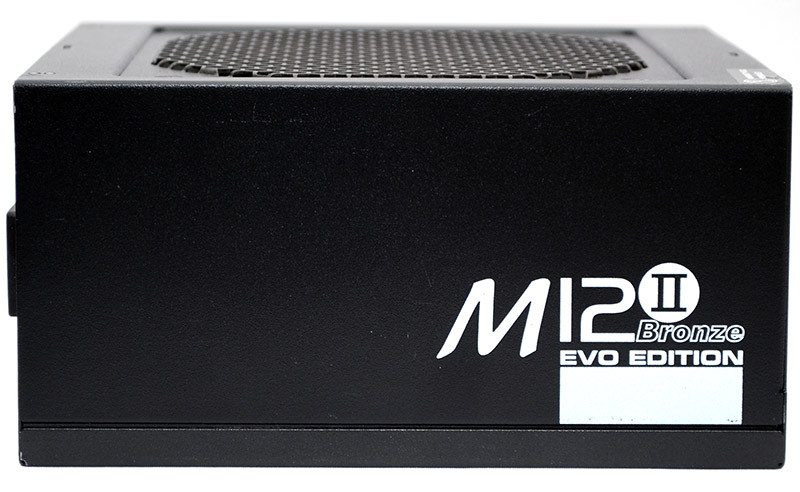
Around the back, we’ve got lots of ventilation for heat exhaust, as well as a master power switch for when you need your system 100% powered down.
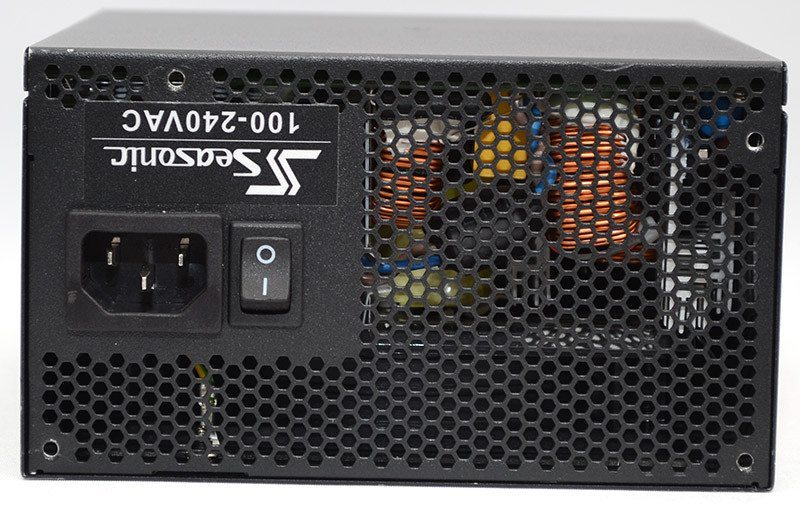
All the usual connectors are here, with a split 24-pin, four 6-pin peripheral connectors, and finally, four 6-pin connectors, three for PCI-E and one more for the motherboard 4+4-pin.
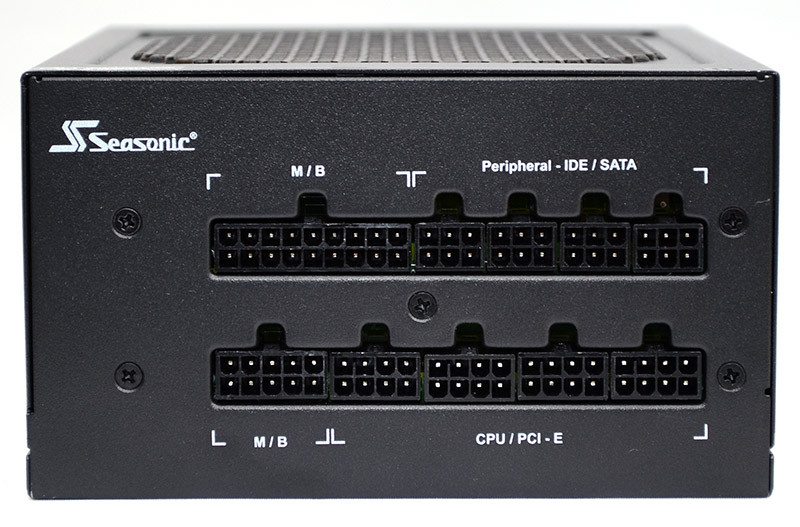
Cabling
All of the power cables are finish in black, with black connectors, so they should blend into your build nice and easy. The flat cable design will make cable routing a breeze, although the 24-pin is thicker, with a black sleeving.
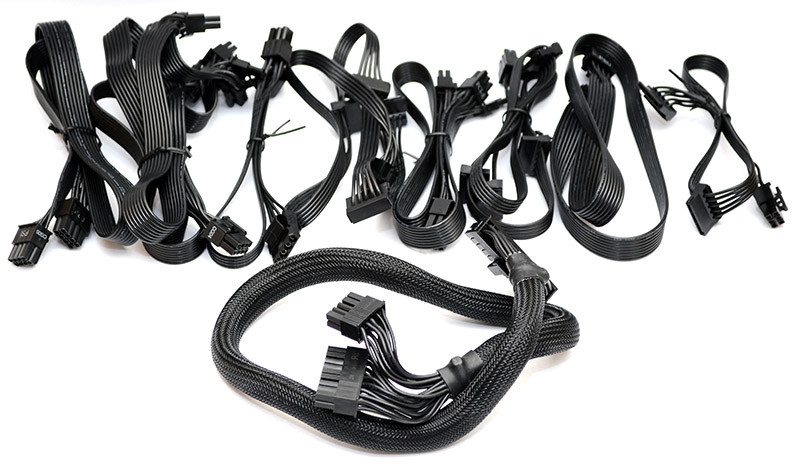
A Closer Look – Interior
The interior of the unit looks nicely designed, with a good amount of space between all the major components, which should help with the overall airflow and cooling of the PSU.
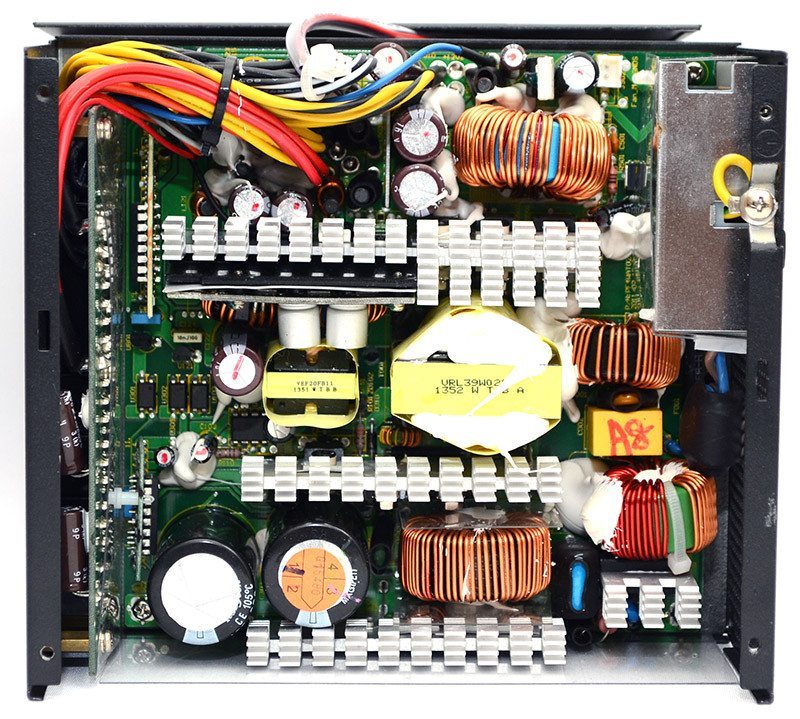
In the corner, we can see there’s a small connector for the fan.
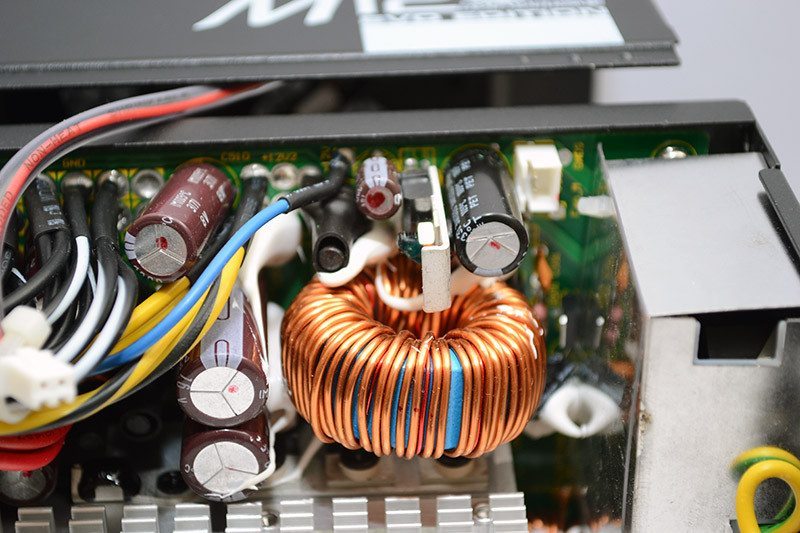
Towards the back, a PCB that holds all the modular cable connectors, behind which you’ll find some more capacitors to help with voltage regulation.
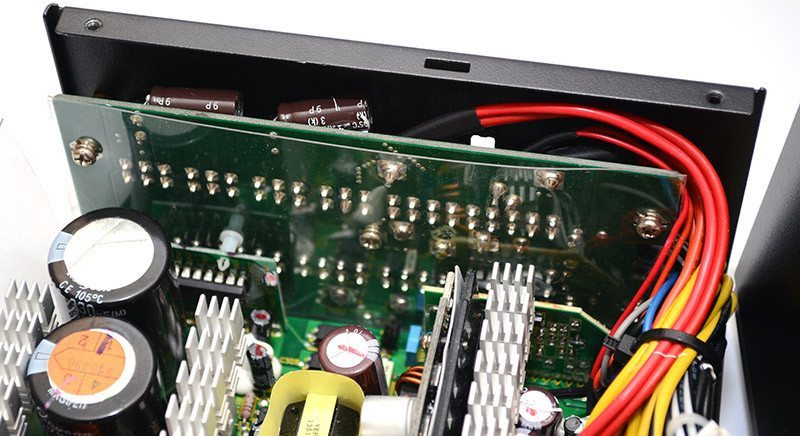
The secondary caps are all high quality, rated for 105c and will help deliver more consistant voltages.
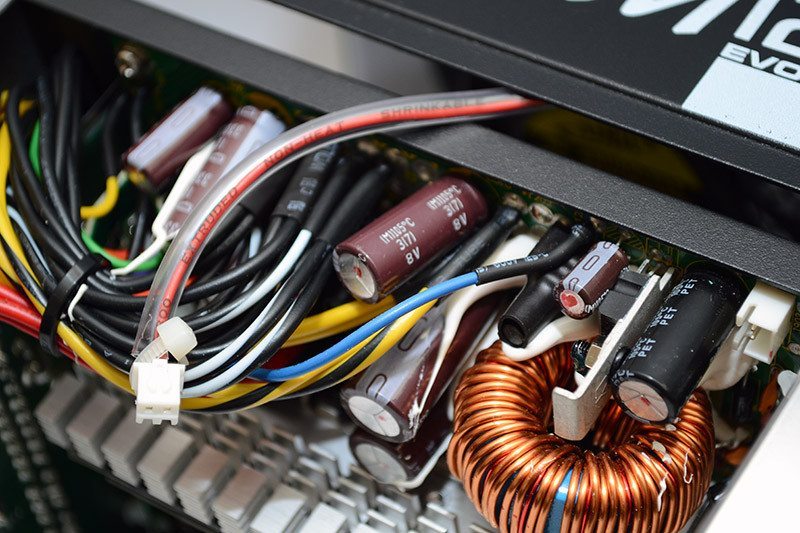
What’s really interesting is that we have a pair of Rubycon 400v 330uf bulk capacitors. More often than not, we see one larger cap, but this should help this unit push some serious power and I’m eager to see how they perform in our testing.
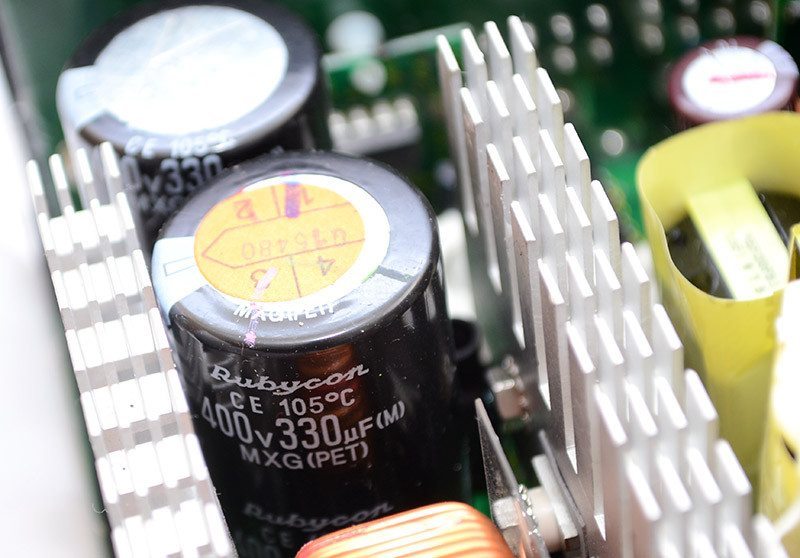
The EM line filtering stage, nicely shielded to prevent electrical interference and ripple.
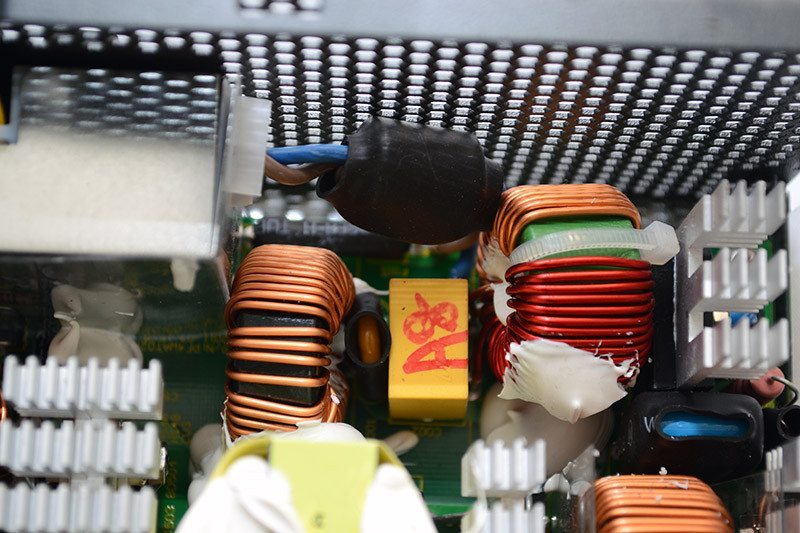
All of the main hardware and the secondary PCBs are using a vertical design, allowing them to keep heat away from other critical components, while also benefitting from the two heat fin arrays that run the length of the unit to help keep it nice and cool.
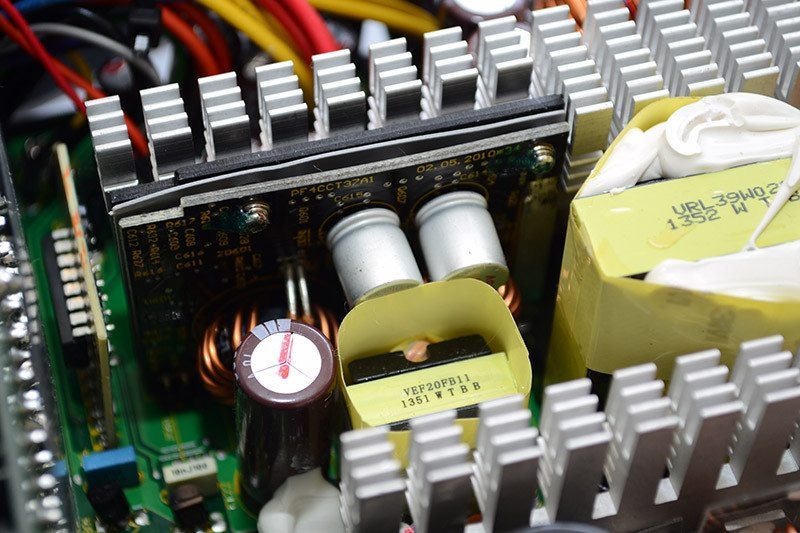
Finally, we have an ADDA 120mm DC brushless fan, equipped with 7 large fins that should allow for some decent airflow at low RPM with minimal noise.
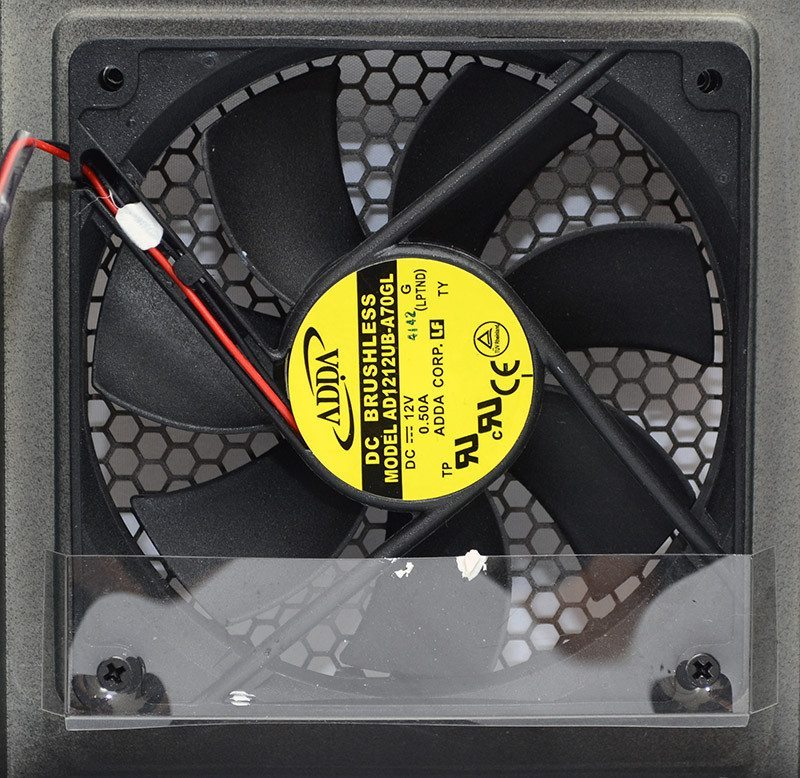
Test Procedure
At eTeknix we take the power supply testing procedure very seriously and have invested a lot of resources into acquiring the appropriate testing equipment. For all power supply reviews we test the power supplies with dedicated power supply testing equipment. This means we are able to get the most accurate results from our testing as opposed to using software benchmarks (such as OCCT) or multi-meter readouts which are broadly inaccurate.
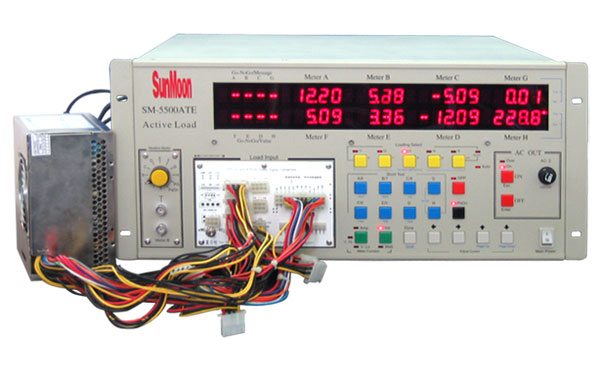
Our test machinery is as follows:
- Sunmoon SM-5500ATE Active Load Tester (1200W rated)
- Stingray DS1M12 USB Oscilloscope
- Voltcraft DT-10L laser tachometer
The eTeknix test procedure involves:
- Testing each power supply at 20/40/60/80/100% load (with balanced load across all rails) and measuring PFC (power factor correction), efficiency (actual power divided by power “pulled at the wall”) and voltage regulation (deviance from expected voltages of 3.3/5/12 on the main rails).
- Measuring ripple with an oscilloscope at 20/40/60/80/100% load.
- Measuring fan speed after a stabilisation period of five minutes at each load scenario using the Voltcraft DT-10L laser tachometer and a reflective strip on the fan.
- Testing each power supply’s OPP (Over Power Protection) mechanism and seeing how many watts each power supply can deliver before shutting down
Other things to consider are that
- We recognise that a single yellow 12 volt cable can provide only 6 Amps before overheating (which corrupts voltage regulation and efficiency) and so we used an adequate number of cables for each power supply to ensure there is not efficiency loss from poor cables selection
- Our Sunmoon SM-5500ATE power supply tester is not capable of testing more than 300W on each of the 12 volt rails so where a power supply provides more than 300W on a 12 volt rail that power is distributed over multiple 12 volt rails on the load tester. For example a power supply with one 12 volt rail supplying 750 watts would be spread equally over three 12 volt rails on the load tester, a power supply with two 450W 12v rails would be spread over four 12v rails on the load tester, two 225W 12v rails for each of the 12v rails on the unit.
- We use the same time scale and horizontal millivolt scale on our oscilloscope for all ripple tests, that is a 20ms T/DIV (horizontal) and a 0.02 V/DIV (vertical) meaning the scale is from -80mV to +80mV, ATX spec dictates that the 12v rail must fall within 150mv of ripple and the 3.3/5 within 50mv so that scale allows us to include both 150 and 50mV peaks. (Some older PSU reviews use different scales which were later ditched as the visual representation they give is inadequate, in these reviews written measurements are provided only).
- Deviance is the terminology used to represent the way voltages diverge from the expected values
Efficiency, PFC and Voltage Regulation
Voltage Regulation
To test voltage regulation we load the power supply to five different load scenarios that give an equal spread of load across every single rail. So that means 20% on all rails, 40% on all rails and so on. We then calculate the average deviance of each rail from its expected voltage.

Power Efficiency
Power efficiency is measured by calculating actual supplied wattage divided by the wattage drawn at the wall/plug, multiplied by 100 to give a percentage. We then compare that to the particular 80 Plus certification the company claims to see if it meets that. You can see the 80 Plus certifications below, we always test 230v power supplies.
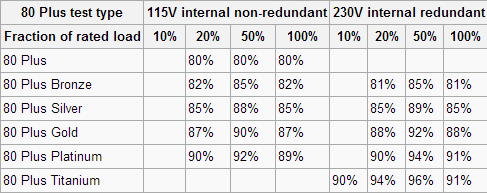

Power Factor Correction
Power Factor Correction is the ratio of the real power flowing to the load, to the apparent power in the circuit. The aim of PFC is to make the load circuitry that is power factor corrected appear purely resistive (apparent power equal to real power). In this case, the voltage and current are in phase and the reactive power consumption is zero. The closer the number to one the better as this allows the most efficient delivery of electrical power (Source – Wikipedia).
Over Power Protection and Max Wattage
Power supplies often quote as having various protection mechanisms such and the most important of these is Over Power Protection. In our testing we crank up the power draw until the power supply either shuts down (meaning the OPP mechanism is present and working) or blows up (meaning it is either not present or not working). We then note the maximum power consumption before the power supply shut down (or blew up).

Fan Speed
When testing in a power supply laboratory it is difficult to take fan noise readings as the noise from the Sunmoon test equipment and air conditioning corrupts everything. The next best thing in our circumstances was reading off the fan speed with a tachometer to get an idea for the noise. The ambient temperature during testing held constant at 22 degrees, with 1 degree of variation. Each power supply had a consistent time period of 5 minutes to stabilise between each load scenario.
In my experience the following general relationships apply between noise levels and fan speeds, though it can vary greatly between the type of fan used.
- Below 800 RPM – Inaudible/Silent
- 800 to 1000 RPM – Barely audible
- 1000 – 1200 RPM – Audible but still quiet
- 1200 – 1400 RPM – Moderately noisy
- 1400 – 1800 RPM – Noisy
- 1800 RPM or higher – Intolerable




















